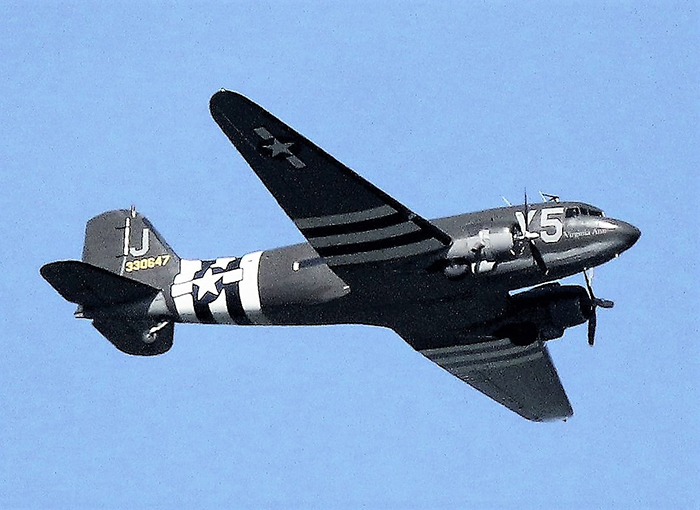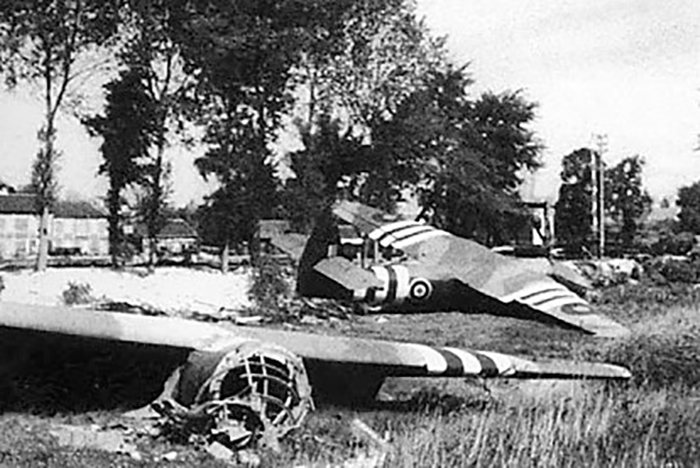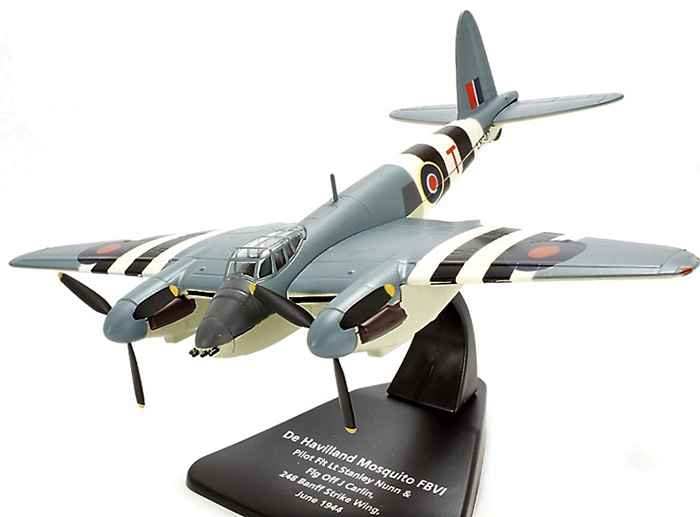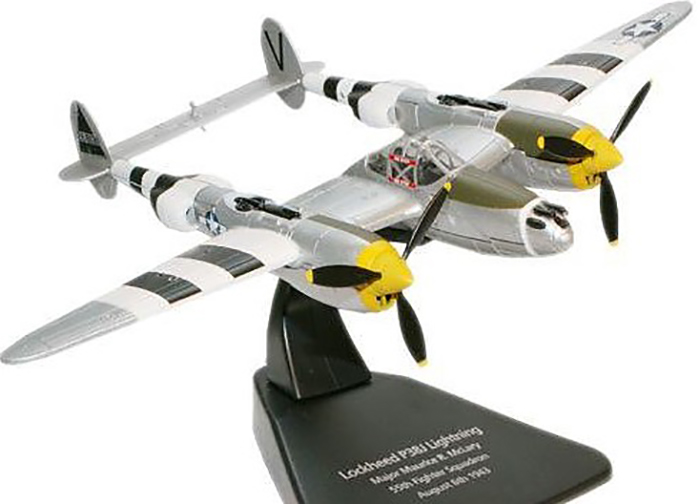

 TERRY SMITH tells us about the application of invasion stripes to Allied aircraft.
TERRY SMITH tells us about the application of invasion stripes to Allied aircraft.
Many of you will know the meaning of the wide black and white stripes that appeared on Allied aircraft during the summer of 1944 - but do you know when the stripes were first used and for what reason?

This real C47 transport, complete with stripes, flew over my house in East Sussex last June. It was part of the 75th anniversary of the D-Day air assault.
The plans for the D-Day landings, the invasion of occupied France, were kept secret until the last minute. Although the invasion was planned a long time in advance, the idea of having all Allied aircraft having the same identifying markings was not actioned until just days before the attack began.
The aircraft were to have five white and black alternating stripes added to them and this was signed off by the commander of the Allied Expeditionary Air Force, Sir Leigh-Mallory, on May 15th, 1944. On the 1st June, aircraft with painted stripes were flown over the waiting Operation Overlord fleet to familiarise naval gunners with the sight of these new-look friendly aircraft.
Troop-carrying aircraft, transport planes, and gliders were then painted up with the markings on the 3rd June, while the fighters and two-engine bombers got their stripes on the 4th - just two days before D-Day.
Stripes were generally not applied to the large four-engine bombers of the RAF and the US 8th Air Force. It was unlikely they would be confused as being hostile, as the Luftwaffe had so few of this type.
The stripes were applied WBWBW, with each band measuring 24” wide. They wrapped around both wings, as well as the fuselage just before the tail. They, of course, had to be applied very quickly and ground crews had their work cut out to get all the aircraft masked up and painted before the attack, with any roundels or numbering needing to still be visible.

A period shot taken in France on or just after June 6th, 1944. These gliders had carried Allied troops across the channel, towed usually by C47 transport planes. Their Invasion Stripes are clearly seen.
The stripes were deemed a success in the first few days after D-Day. However, it became apparent that having the black and white bands on the top of the wings made the aircraft extremely visible from the air when they were on the ground. This made them an easy target for Luftwaffe pilots, so the top wing stripes were soon painted over in the normal camouflage that the RAF planes carried - whilst the USAAF planes also got their normal wing-tops back.
By the time France was liberated there wasn't any need for the stripes at all. They did reappear during the latter part of the war, when they were often applied to captured Luftwaffe aircraft that were under evaluation by the RAF. It must have been scary flying in an aircraft type still being used by your enemy!
This was not the last time stripes were used on British aircraft during times of conflict. The Fleet Air Arm and RAF used them on planes involved in both the Korean War and in the Suez Crisis. However, the stripes do date back to earlier than D-Day; Allied planes had them applied for some diversionary tactics across Europe, which included Operation Starkey near Boulogne in September 1943.

A De Havilland Mosquito as it would have looked on D-Day. One of the many Oxford Diecast models to feature Invasion Stripes.
Earlier in 1942 the RAF had introduced its new fighter, the Hawker Typhoon. It was faster and carried more armament than previous aircraft, but there was a problem. From the ground it looked very much like the Focke-Wulf FW190, so they were at risk of anti-air fire from friendly gunners. To solve this problem, the Typhoons had black and white stripes added to the underside of the wings. This idea was eventually abandoned in early 1944 – only to reappear again some months later for D-Day!
Oxford Diecast have, since their introduction of their 1:72 Scale Aviation models, have featured many planes kitted out with these stripes, making them an ideal for a collection based on this historic event.

This is how the USAAF aircraft looked with stripes, as applied to this Lockheed P38 Lightning. Another great looking model from Oxford Diecast.